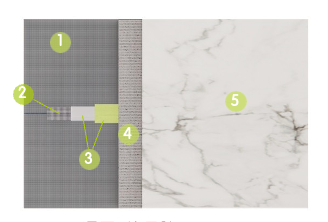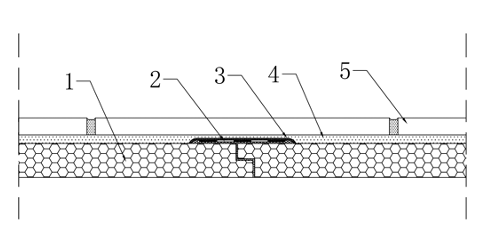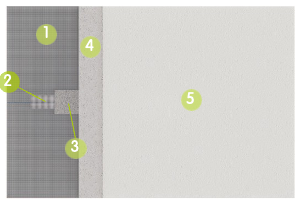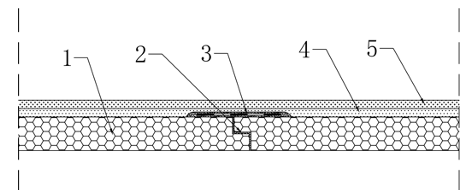In construction and tiling projects, proper gap treatment is essential for maintaining a durable and waterproof surface, especially in areas exposed to moisture such as bathrooms and kitchens. This guide provides detailed instructions on how to treat gaps in both wet and dry areas using various materials and methods. By following these steps, you can ensure the longevity and stability of your finished surfaces.
Wet Area Gap Treatment
Method A: Using Adhesive

- Board
- Self-adhesive mesh fabric
- A5 adhesive + waterproof rubber membrane
- Thin tile adhesive (3-5mm)
- Finish layer (tile, ceramic panels, stone, etc.)

- Board
- A5 adhesive, self-adhesive mesh
- Waterproof rubber membrane
- Tile adhesive
- Tile or stone finishes
Notes:
- Suitable for wet area gap treatment processes.
Method B: Using Waterproof Mortar

- Board
- Self-adhesive mesh fabric
- Waterproof mortar
- Leveling putty
- Finish layer (tile, ceramic panels, stone, etc.)

- Board
- A5 adhesive (cut the extruded part after it dries)
- Self-adhesive mesh, waterproof mortar
- Leveling putty
- Artistic paint or micro-cement as flexible finishes
Notes:
- Suitable for wet area gap treatment processes.
- Clean the gaps, squeeze out A5 adhesive, and after it dries, use a utility knife to trim it flush with the board.
Wet Area Gap Treatment Steps
- Clean the joints and smooth out excess adhesive.
- Apply self-adhesive mesh.
- Apply adhesive and smooth it out with waterproof rubber membrane/ waterproof mortar.
- Apply thin tile adhesive or leveling putty.
- Finish with tile, ceramic panels, stone, or flexible finishes.
Dry Area Gap Treatment
Method A: Using Adhesive

- Board
- Self-adhesive mesh fabric
- A5 adhesive
- Tile adhesive
- Finish layer (tile, ceramic panels, stone, etc.)

- Board
- A5 adhesive, self-adhesive mesh
- Tile adhesive
- Tile or stone finishes
Notes:
- Suitable for dry area gap treatment processes.
Method B: Using Waterproof Mortar

- Board
- Self-adhesive mesh fabric
- Gap tile adhesive
- Leveling putty
- Artistic paint or micro-cement as flexible finishes

- Board
- A5 adhesive (cut the extruded part after it dries)
- Self-adhesive mesh, tile adhesive
- Leveling putty
- Artistic paint or micro-cement as flexible finishes
Notes:
- Suitable for dry area gap treatment processes.
- Clean the gaps, squeeze out A5 adhesive, and after it dries, use a utility knife to trim it flush with the board.
Dry Area Gap Treatment Steps
- Clean the joints and smooth out excess adhesive.
- Apply self-adhesive mesh.
- Apply adhesive and smooth it out with tile adhesive.
- Apply thin tile adhesive or leveling putty.
- Finish with tile, ceramic panels, stone, or flexible finishes.
Proper gap treatment ensures that your installation remains durable, water-resistant, and visually appealing. Whether you’re working in wet or dry areas, following the right process will ensure that your construction surfaces stand the test of time. By using high-quality adhesives, self-adhesive mesh, and waterproofing methods, you can achieve long-lasting results in both residential and commercial spaces.
Welcome to Contact Us!
If you have any questions or need further guidance on gap treatment techniques, our team is here to assist you. Whether it’s for residential or commercial projects, we provide expert advice and high-quality materials to help you achieve exceptional results.
Feel free to reach out to us today for inquiries, consultations, or support with your construction needs. We look forward to helping you bring your project to life!
Talk to us today to discuss your requirements with one of our experienced and friendly team

